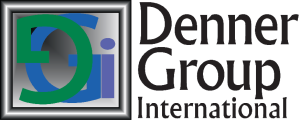Leading Cross Functional Collaboration
As organizations mature, the tendency to operate in silos and wage turf wars is a natural phenomenon. This usually results in weak, if not non-existent, cross functional collaboration on just about everything except really pressing matters. And then, it’s only to solve really serious problems in a reactionary fashion.
Truly healthy organizations have productive lines of communication and constantly engage in robust and productive discussions between departments and within departments.
 An excellent way to foster productive communication is to engage employees in a collaborative process to help keep expenses in check. Have them spend half a day to two days in a structured session talking about how to manage expenses. This is best done in a group of not more than 24 people with one to three individuals from each department.
An excellent way to foster productive communication is to engage employees in a collaborative process to help keep expenses in check. Have them spend half a day to two days in a structured session talking about how to manage expenses. This is best done in a group of not more than 24 people with one to three individuals from each department.
During the session, have them address problems or challenges that THEY see can be corrected or improved. An outside facilitator can greatly enhance the results. He or she can cut through the politics and create an environment that lets innovative ideas to bubble up. This is hard to do with an internal facilitator leading and coordinating the process.
During a public half-day event of this type that we led for individuals from different companies, one realtor found $60,000 in savings. Multiply those savings by the 20 or more realtors in her office and you begin to see the possibilities.
We have also seen two industry–leading firms, one an animal feed company, the other a construction firm, identify more than $1.5 million each in ongoing annual savings. These two sessions involved two full days with staff from various departments and senior executives of the organization. Both firms have more than 200 employees.
Obviously, some planning is required, as is an understanding on the part of the organization’s leadership about what is important in the process and why. It’s also important to identify up front what long term outcomes are possible from a cross functional collaboration exercise. Part of the process includes ensuring that accountabilities are established during the session – not afterward.
This example isn’t just a cost-cutting exercise. It’s a motivating process to get your workers thinking and acting creatively on a daily basis. And it’s a way to open up communication across and between departments. This benefits everyone and directly affects the bottom line in a positive way.
Regardless of the age of the organization, creating an environment for cross functional collaboration focused on problem-solving is your big benefit. This includes the topic of cost-cutting. Helping your employees learn how to actually communicate across departments is excellent preventive medicine.
Please contact me if you would like to learn more about how your business can benefit from this type of workshop.

